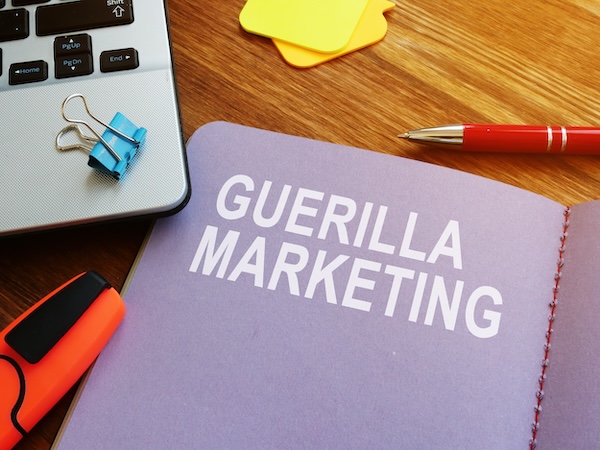You’ve built your website. What next?
The next steps you take should be focused on getting people to find you and start using your website and building traffic and business.
How to get your website noticed, both by Google and by potential customers
When planning how to get your website noticed, keep the following in mind.
- Think about the objectives for any marketing and promotion that you do for your website
- Consider your budgets and plan accordingly
- Think about short term and long-term strategies – paid search can be highly effective at driving traffic, but it can come at a high cost. Can your business afford this for a prolonged period? Do not overlook longer term strategies such as content creation and search engine optimisation (SEO).
How to get your website noticed by potential customers
Create engaging content
Creating good and engaging content will be vital to the success of your website. And it will help ensure that you get noticed by potential customers.
Not only will content form a key part of your SEO strategy (see below) it will also
- Provide a positive experience for customers – relevant, useful and engaging content, delivered to users at the right time will improve their experience, help them achieve their goals, give a positive brand experience and aid intent and retention
- Help your social media presence – engaging content is more likely to gain traction on social and help you achieve your goals
- Build authority and trust – if you build content which is informative, answers questions and demonstrates your expertise, as a brand you will build authority. People will see that you know what you are talking about and are an expert in your area. This in turn will help to build trust with your users/customers
- Help generate leads and conversions – Content can signpost users to your key landing pages and help during the conversion funnel. Giving users a positive experience with your brand also makes it more likely they will purchase from you in the future
You can build out a wide variety of content with different objectives. Content can inform, educate, entertain and answer questions for example. And it can take on many forms. Blogs, videos, infographics, reviews, customer testimonials, interviews, whitepapers, how to guides, top tips etc.
With such a wide variety of content and types of content that can be created it is important to create a content strategy which maps out what you want to achieve, sets goals for your content, and details what content will be created when. It can be easy to be overwhelmed by such a large task as content creation so getting a handle on what you want to create and when will be important. You also need to ensure that at least some of your content is tailored to what potential customers are looking for and also what search engines determine as useful content.
Attract visits to your website from social media
Social media marketing has grown significantly in recent years. Facebook, Twitter, Instagram, LinkedIn, Pinterest are all places you can promote your business and your website. Whether you do this organically – posting updates via your own accounts, or if you choose to run sponsored activity, you can reach large numbers of people.
Today, some brands rely entirely on social media to create a buzz around their brands. Think about the vertical you operate in and determine how you can best make use of social media. If it can help meet your objectives and you can find your target audience there, then go ahead and make use of relevant platforms.
Also think about how you direct people over to your website. You don’t want to make your social media posts a constant sales pitch, with every post focused on selling.
One way to get people to your site is by posting links to your content. If people engage with your content and connect with your brand, they may then go on to visit other pages on your site.
Invest in online advertising
There are many elements of online advertising which you can use to help get your website noticed by potential customers.
Paid search (PPC) – PPC refers to the paid for adverts on search engine results pages. They typically appear at the top and bottom of the page on a Google results page and will clearly be labelled as ‘Ad’.
Investing in paid search gives you high visibility for the keywords you want to be appearing for. You choose which keywords you bid on and therefore which keywords your adverts appear for.
Paid search can drive high volumes of qualified traffic to your website and is a good way to get your website noticed. Particularly from a sales perspective. But it comes at a cost. It’s therefore important to keep an eye on your ROI to ensure campaigns run efficiently.
Paid search can also go live immediately from the point that you set up your campaigns. It can be used as a quick way to get your website on Google and other search engines and in front of your potential customers. It can be used for example to help gain you visibility whilst you build your content and SEO positions.
This econsultancy article gives an overview of what PPC is.
Display Adverts – Display adverts can be used across the internet and refer to the use of visual adverts. They can be targeted in a number of different ways:
- By site – you choose which website you want your display adverts to appear on
- By context – you choose the context you want your ads to appear in. For example, you advertise car insurance on a website selling cars
- Remarketing – display adverts can be targeted to those who have already been on your website. Through the use of cookies, these users can then be served your advert when they visit another site. The aim is to get the user to return to your site and make a purchase (or complete whatever goal you set)
Whilst click through rates on display adverts can be low (particularly when compared to search advertising) they can deliver results if you have the right creative, goals and measurement in place. It is also possible to show a large number of ads for relatively low cost making it a good way to build brand awareness.
Video Adverts – Video advertising will typically appear ahead of streaming content. For example, the adverts that you see before you start the video you want to watch on YouTube (or other content streaming services)
There will be a variety of formats that you can run and a number of ways to target your audience depending on which platform that you use. You can for example choose to reuse your TV advert or a cut down version. Or if you do not run TV advertising you can create videos specifically for online advertising usage.
Video advertising can also reach a large audience at relatively low cost. Video is also thought to be one of the more engaging forms of content when it comes to advertising.
Run an email campaign
Email can be a cost-effective way of reaching not only existing customers but also those who have shown an interest in your brand by signing up to a newsletter etc. And by using a targeted contact list it can yield positive results with potential customers.
- Do you have a customer database that you can communicate with?
- Or could you consider purchasing a relevant and targeted email data set to start an email campaign
- What are the objectives of an email campaign?
How to get your website noticed by Google
Search engine optimisation (SEO). The ‘organic’ search results displayed on search engines such as Google (those which aren’t ads!).
SEO is the way to get your website noticed by Google. Done properly, you will see your website appear higher on the listings. It is more efficient to get it right from the beginning than to have to go back and make changes to your website at a later date. Your site structure will be critical to this. As well as getting the right tools set up on your website – such as Google Analytics and Google search console as just a couple of examples.
Take a look at this post looking at 7 free SEO tools which can be of benefit to your website.
Where your site falls in these search results is not an accident. Your position in search results for certain terms will be determined by search engine algorithms. The way to improve your rankings is to invest in SEO.
Optimising your website itself to give the best possible chance of appearing higher up the results – structure, page speed, how friendly your website is to mobile users, words, page titles, links, and volume and quality of content. All of these factors matter on your website.
You’ll also need to consider factors external to your site. Factors such as people linking to your content, people sharing your content, mentioning your brand and reviews of your product or service are all important when it comes to SEO.
Put simply, if your site appears higher up the search results, then more people are likely to find your website.
SEO takes time and continued investment of effort to obtain and maintain positive positions on Google. Take a look at this post covering what SEO is for a more detailed insight.
ACES Marketing are a full-service Surrey-based marketing agency. We work across the entire marketing spectrum and have a depth of experience spanning content strategy and planning through to SEO and online advertising. Get in touch with us today to see how we can work with your business to help you achieve your goals.



